When we talk about “narrative” or “storytelling” in games, the conversations really fascinate me. I think the same for any aspect of working on a game. Writing for a game is SO RIDICULOUSLY fundamentally different from writing a traditional story, that it takes a whole different type of mindset. Every game is different. Every context of the writing is unique.
You can’t just think linearly. You have to look at context, atmosphere, restrictions of the system, the randomness that comes with having something interactive… The same for music in games, art in games… Games are very haphazard, roughly strewn together bits of “other mediums”. Sometimes the pieces fit together well. Sometimes they work against eachother.
I think maybe the smaller the scale of the game, the easier it is for the pieces to fit together.
My ongoing frustration with big AAA games is that they often really feel like aspects of the system, or aspects of the art, are fighting against eachother. It’s kind of like, AAA by nature, and by the scale of how many people are involved, is just fundamentally pitted against itself… especially in terms of being able to pull off the type of congruent experiences that smaller devs give us.
I realize I’ve been very critical of mainstream games here, but also I spent $60+ on something that promised a lot, got hyped to hell, awarded to no end… but somehow doesn’t make me feel as involved as when I engage with work from smaller devs.
When all the pieces fit together, games are amazing. I don’t think my fascination with them, analyzing why, picking them apart… will ever go away.
Recommended reading on all the above (said much better than I could)…
New post – "Deadgames and Alivegames" – wondering about a future decline of game design talent (especially in AAA), the common practice of large development teams, and thinking about what a designer gives up when they aim for big teams and profit. https://t.co/JUy6EfpX2Z pic.twitter.com/5uXWWNE9l2
— melos han-tani ?? (@han_tani) January 10, 2021

– Deadgames and Alivegames by Melos Han-Tani
I have one more thought to add to all this before getting into exploring a really amazing space in games…
When mainstream outlets applaud games for “finally” having things like queer representation (we saw A LOT of that happening with The Last of Us 2, for example the constant flow of articles like this), they are usually AAA games that get all that praise even if there was a literal SLEW of stuff happening in indie way before the same thing got into AAA.
For example, there are so many queer game devs that have been talking about the queer experience in their queer games for literally ever that I can’t imagine why people would laud a modern AAA game for “finally” doing that, but hey.
My question here is that maybe the issue is that games by small creators aren’t viewed as “real games”?
This seems to hover over many of us when mainstream games get hyped to no end.
It’s kind of aggravatingly invalidating when I read articles from big outlets, and I look at the examples, without fail AAA games are the ones lauded for things that smaller devs, and indies, have been pioneering for ages. Your gay romance, or trans representation, certainly did not start in The Last of Us 2. AAA wasn’t exactly the most welcoming space to minorities either. Not until these things became popular enough to acknowledge.
Yet the effort from “smaller independent creator” doesn’t really make it into the resulting broader discussion. Again, I think it’s because smaller work isn’t viewed as “real” or “legitimate”.
I’ve noticed this with my work too. It’s often not treated as “real” or serious. I’ve lost count at how often the mainstream part of games has referred to me as a “so-called game designer” or “self proclaimed game designer” (you can swap out “game designer” with things like “artist” or “net artist”). This happened remarkably often when they covered me coming forward about my assault. The invalidating language speaks volumes on a number of levels.
So I think maybe the issue is our view of what amateur and hobbyist work is. If that would change (free and small are just as culturally valid), the broader cultural scope of how people view games would improve. I certainly think they would reach more people then.
For example (and last example on this), when any random stranger asks me what I do for a “living” and I tell them that I make games, they will literally default to stuff like Counter Strike, Half Life 2, The Last of Us… Sometimes they don’t even care, or look at me sideways like I invented violent video games, because games have this image of being competitive, violent, bro, AAA… I’ve never met an Uber driver that knows about all the other stuff going on in games (like “art games”). It takes a lot of explaining that I don’t make “games like that”. It’s easier just to say that I’m a “net artist”. Ironically enough more people know what that is.
So that’s my opening rant. I’ve been wanting to make recommendations, and talk about, all the amazing indie and alt horror games that are out there. It’s a tremendous space that strongly illustrates how beautiful of an artform games are.
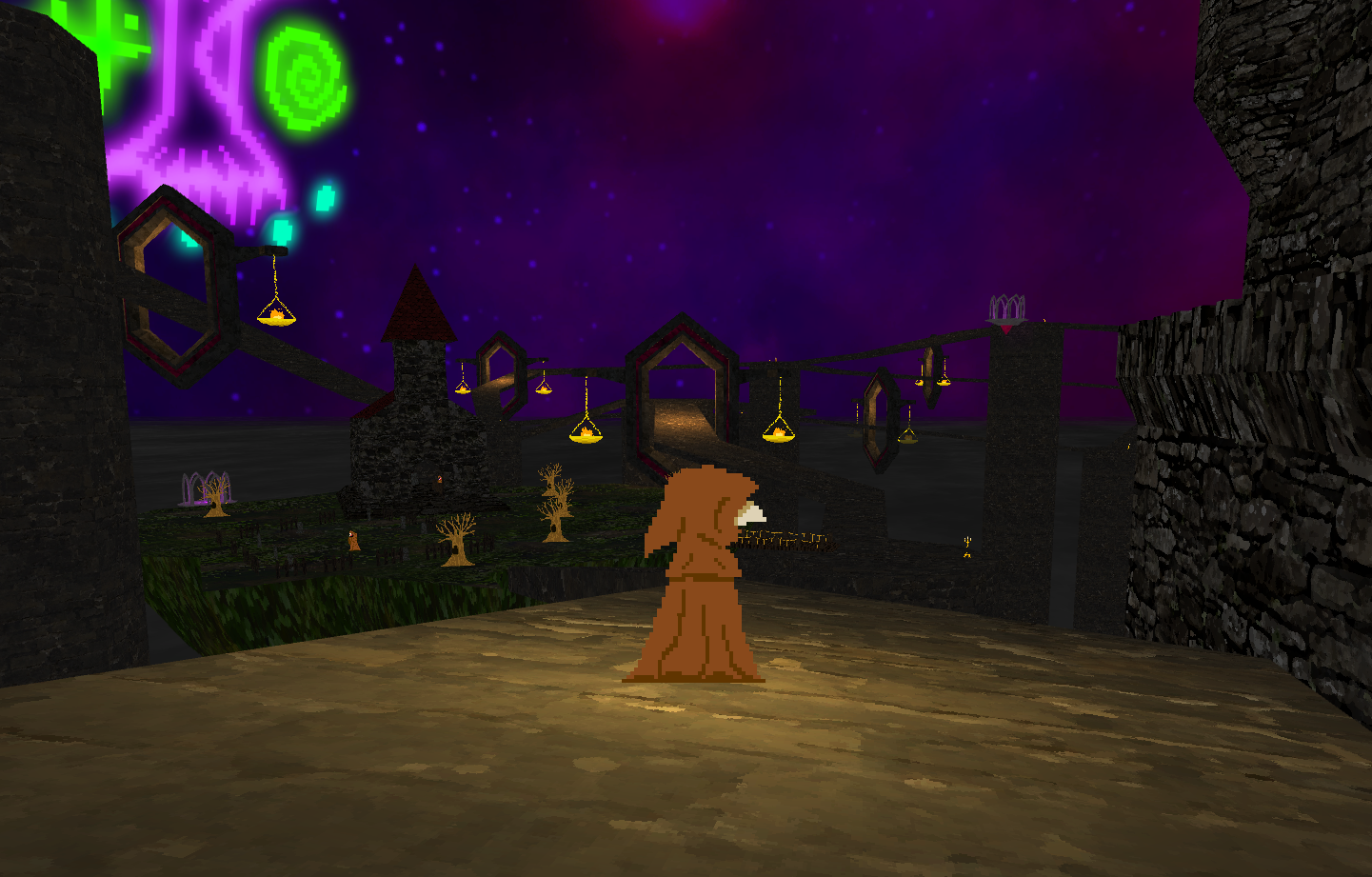
– Haunted Cities, Volume 3, by Kitty Horrorshow
Before you continue reading, you really should explore the work of Kitty Horrorshow (if you’re not familiar with her). In my opinion she’s the mother of Unity era indie horror games. Her work is incredible and captures a lot of what I talk about here… The underlying poetry of horror, the surrealism, the emotions you feel from playing this stuff. A lot of this stuff is more than “just horror” in a entertaining sense. These games offer you kind of an exploration into something deeper, unsettling. I can’t recommend it enough.
Other devs that are doing interesting stuff with horror, that I recommend you follow are
Breogán Hackett (try Bleakshore)
cathroon (everything, just dive in), Puppet Combo…
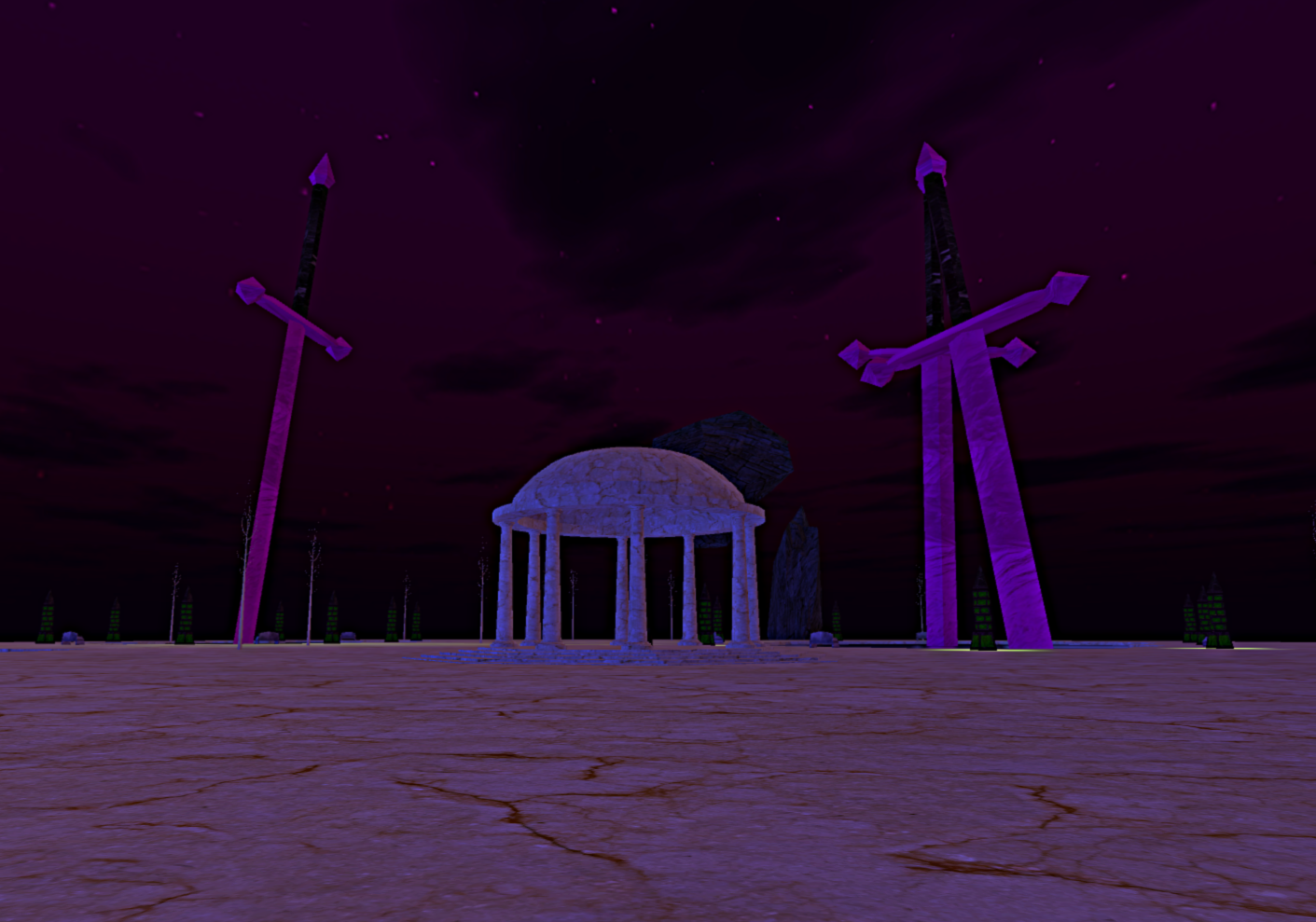
HAUNTED CITIES, by Kitty Horrorshow
I recently started playing the Dread X Collection. I’m on the first one. My goal is to work through all the collections (there are three). You can actually download all of them in this bundle. and I STRONGLY recommend doing that.
The collection kind of blew me away to the extent that I had dreams about it. It’s really beautiful.
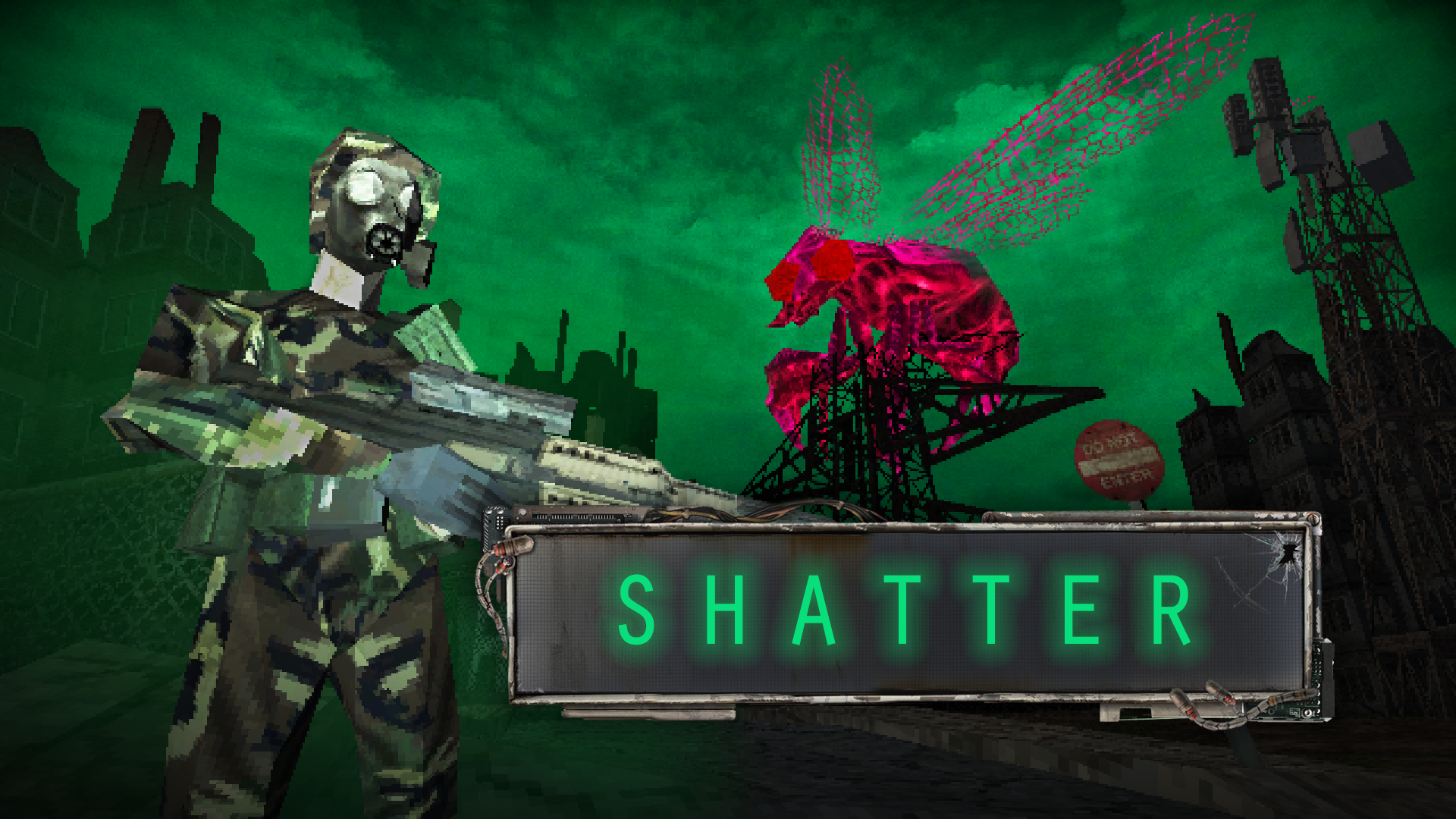
The game that I got stuck on spending the most time with is SHATTER by A Lovely Hellplace.
It’s actually the experience that inspired me to write this. I think this one is really fascinating, and I urge you to check it out because… more people need to know about it.
SHATTER is kind of cyberpunk, dystopian, hopeless horror future, where neural networks blur the line of real and digital. The idea of “neural network” and digital in games has been done a lot, but I loved how different this one is.
When you start, you find yourself in this rotten broken city. It looks normal as far as a ruined post-disaster city might look. You talk to some characters that give you some background, and you eventually find your implant to connect you to the digital realm.
Once you do, the environment goes through this big change and you see things that were invisible to you before. There are these beautiful and horrible insects everywhere. It looks parasitic. You interact with the overlord one, it tasks you to go get something, and you can leave the area of the city that you were not allowed to leave before.
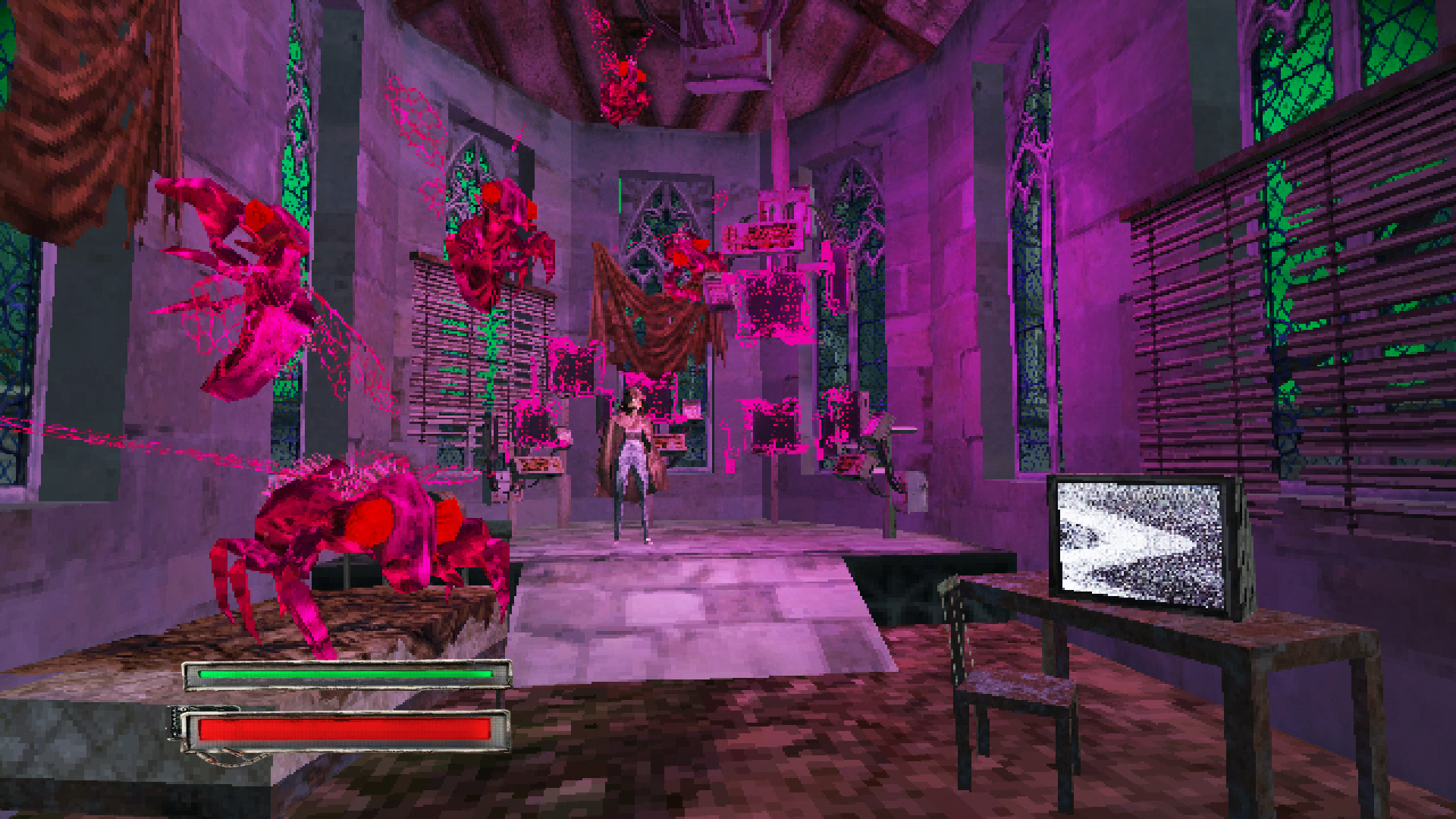
Where I think SHATTER starts to get really interesting is when, in one of the buildings, you find a terminal, and the digital layer you saw until now (giant insects) changes again. You then see these haunting human like specters that seem to be controlled by the parasitic flies. A little body horror involved in the way the game portrays that…
I walked up to one and it started attacking me. It’s the first time in the game that something extends violence to you, and you can die. The horror kicks in at this point.
Overall the experience amazed me for how you uncover these “layers” to the game’s reality. Things invisible to you become visible when you shift between these layers, they even impact you. The space is the same, but the way you SEE it changes.
I think this is brilliant. It’s a haunting experience that very much stays with you for how it lets you explore perception.
I can’t recommend it enough.
This entire concept (perception) is something that I think is underutilized in games. Like I remember talking with a friend about how GTA V lets you play all these different characters, but the way you experience the world doesn’t change between characters. You all LOOK at the world the same way, even though the game wants you to believe that they are different people, and you’re supposed to be experiencing the world through them. You could basically say this about any story driven game that lets you play the same environment with different characters. I mean, this may be a pet peeve, but I just think it’s interesting how the concept of “perspective” doesn’t seem to get very explored, especially not in larger titles. The worlds are very linear. The way the game lets you experience someone else’s shoes is done more through things like narration, story… not so much through how you exist in the world. So I think this makes SHATTER a really unique game. It’s special for that.

– The Haunted PS1 Demo Disc 2020
Game worlds can be so much more than just “a space”. The way smaller indie games interpret that never ceases to amaze me.
The ongoing boom of horror games on itch.io kind of demonstrate a lot of that.
https://itch.io/games/tag-horror
https://gamejolt.com/games/tag-horror
The Dread X Collection has a lot of other stuff to offer too, and each game is a different approach to horror. Collections like these are popping up all over. For example, also check out the Haunted PS1 Demo Disks.
See also the Scary Tales Vol 1.
AND C.H.A.I.N. and so on…
What I think is interesting about all these is the way these games kind of express horror along with the low-fi aesthetics. It seems perfect for horror because horror is often about what’s OMITTED, and not so much about what it shows. Like how a horror movie stays scary as long as you don’t know how the monster looks (that may be a bit reductive, but it’s the classic example)… These games kind of remind me of that.
Don’t Go Out is a pixel art horror game where the way the “monster” creeps up on you is portrayed as warnings like “it’s coming” showing up as stylized pixel text on the screen. The way the “lack” of visual information (as low fi pixel art) is used makes it scarier I think.
It reminds me a lot of FAITH (by Airdorf) which is a VERY low-fi horror game.
It’s also an amazing horror game.
The premise is…
“On September 21, 1986, two priests arrived at the Martin Family home in rural Connecticut to investigate an apparent case of demonic possession. Only two people would leave the house alive.
Haunted by nightmares and searching for answers, a young priest travels down a dark highway to return to the cursed house a year later.”
FAITH is set during the “Satanic Scare”. You go exploring this eerie forest and the houses there. It has this hovering sense of uneasiness, where things are clearly very wrong. The way it introduces the scary elements is smart because the buildup is so unsettling.
I don’t think it would be the same if it wasn’t for the low-fi art style.
The lack of detail is exactly why it is so scary. A lot is left to your imagination.
Critters for Sale is another interesting example of “less is more” (for lack of a better term, sorry), disconnected visuals, “alluding” to things, and the way that’s delivered as a story… It all basically takes place in this really stylized UI. Images of what the story is about show, and animate. Delivery is like a text adventure. It’s really interesting, and worth checking out.
See also: World of Horror.
Both of these are beautiful games.
What I think is unique about games like Critters for Sale, SHATTER, or work from artists like Kitty Horrorshow, is how beautifully surreal the horror experiences are. There’s something about games that make surrealism (that “poetry” from interpreting spaces) so impactful. They lend themselves well to that. When surrealism of digital spaces intersects with horror it can be an amazing experience. A lot of horror games I played I would call singular. There’s this poetry to what they are doing.
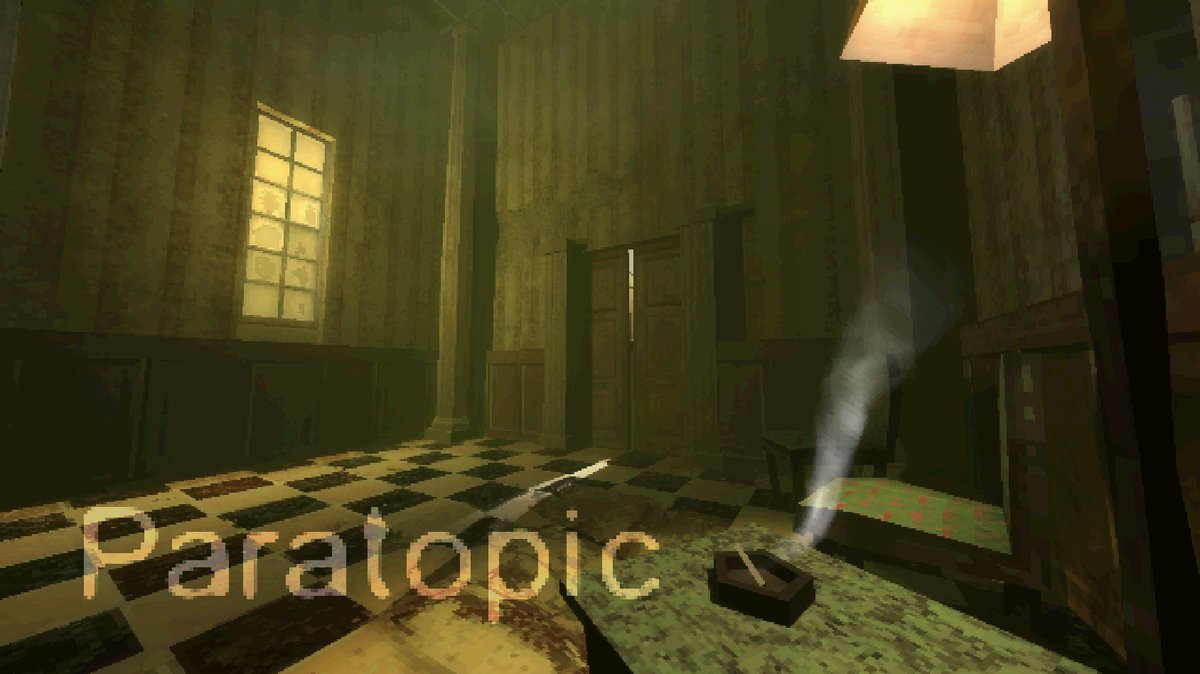
– Paratopic by Arbritrary Metric
If all this sounds appealing to you I strongly suggest you try Paratopic. It captures all this so well I don’t think I’ll ever really forget it.
Paratopic is a game that’s hard to describe. It’s breathtaking in a lot of ways. The sound work, along with the distorted “horror” aesthetic, intentional use of low-fi mixed with glitch in a 3D sense, the writing… It’s just something else. I’m grateful it exists. It’s not necessarily scary in a traditional sense. It’s scary for the mood it gives you. What it alludes to. What it leaves up to you to interpret. I couldn’t recommend it enough.
I think it goes without saying that the majority of all these games are more poetic than just straight up horror. I think that’s why they get so impactful. It’s about more than just fear. It’s about a breadth of emotions that make you uncomfortable. To me, horror has always been about confronting things that you might be uncomfortable with. So when a game can give you an experience that’s beyond jump scares, or fear of bodily harm, it’s kind of a profound experience that really sticks.
With the majority of these, especially if you explore the Dread X Collection, you see how all of them have wildly different takes on horror. They’re also wildly different in terms of traditional “game design” or a “traditional game” sense. Paratopic sure is singular. It’s more about experiencing very evocative environment, with a story that you piece together, than a straightforward game. I feel like, for all the examples here, that the indie horror boom that’s happening right now is giving us a lot of really unique takes on what a game is.
Games like these kind of illustrate to me how many of our traditional design approaches to things like “gamification” and “game design” can fail games.
Basically how games are gamified, or the gamification of games… It’s a mouthful, but I think the train of thought is worth following here: Our approaches to gamification and game design don’t always make things funner. They often just make things unnecessarily competitive, and we lose a lot of the other emotions, impact, experience…
I don’t think any of these examples would be the same if the traditional game design tropes would have been applied to them. Horror is a very atmospheric type of thing. It’s more about emotion, and experiencing, than it is about giving you a “goal”…
Kind of tangentally, but all this got me thinking about a chat I had with a friend about making the Electric Zine Maker more “gamelike”…
The discussion was kind of in line with how it’s not “really” a game (I mean, yes, but no, but yes, but)… at least not enough of one. I insist that it actually is a game since I’m designing it around the models of “play”, but for all that effort it still doesn’t read as “game” but more as “toy” (imo games are toys too).
Overall, it was interesting because the default ideas, when talking about making the Electric Zine Maker more “gamelike”, were in line with “unlocking” tools if people completed X, Y, or Z. Assigning goals and even maybe showing ways to measure progress when making a zine.
I think this would actually end up radically changing the fundamental experience of the Electric Zine Maker. To me, it actually sounds like a nightmare because it introduces a lot of pressure. EZM is about disarming you, eliminating judgement, making a space where you can explore without pressure, being free from the pressure of making something “good” and just having fun… If I would “gamify” it by traditional standards, all that would largely go away. It’s designed around what I view other aspects of “game” to be, and building around that… So then the conclusion is, why is our kneejerk reaction to game design so much about competition?
I think the destinction is interesting because it shows what we think a “real” game is, and everything else that doesn’t exactly qualify as that. “Play” is not enough in the sense that the player should be allowd to just goof off and explore their own way of interacting with an object. Games themselves must adhere to the idea that there are goals, unlockables, numbers, metrics… pushing the player to excell at the task. Esentially they are systems built around competition.
This very much fights against other modes of experiencing something, like surrealism, existing in a space, slowly alluding to a story… basically horror. I’ve never played a traditionally designed horror game that made me feel such strong feelings as many of the above examples.
My hot take, in terms of that type of traditional game design, is that it doesn’t necessarily improve the experience (make it fun, emotionally engaging, evocative…), it only maximizes engagement. You spend longer on the thing, but is it actually qualty time spent on it? Or are you grinding because it’s built to be adicting?
My extended hot take is that: we must destroy video games in order to make better video games.
Ok, yes, that’s cheesy catchy, but if you think about it… if you abandon a lot of the conceptions of what a game shoult be, have, act like, you end up making much better art. It just stands on its own. It’s more unique.
I think a lot of our conceptions of what a game should be, how it should act, what is “good design”, “good mechanic”… Is more based on being a commercial object, meant to sell, than it is to be art (an experience that says something, makes you feel things, makes you think, something to experience, something unique…).
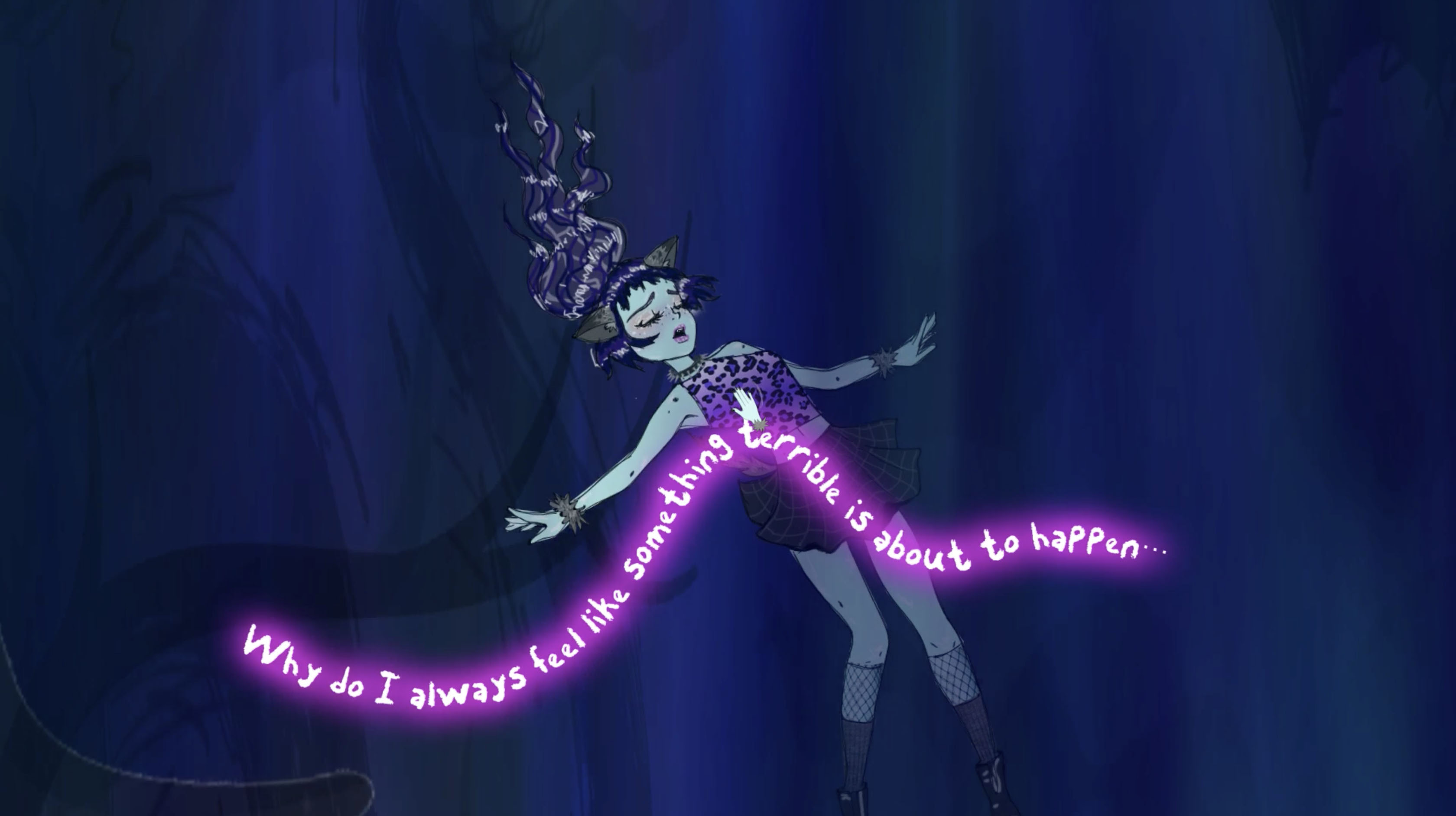
– Nightmare Temptation Academy
A friend of mine talked about how he stopped playing Red Redemption because it was too much of a time sink. I can see why. A lot of AAA games seem to bloat themselves with weird arbritrary goals to unlock things, or tasks to do before you can actually go do what you want to do in the game (like explore).
It’s funny that I rarely really remember a lot of what I do in AAA games, even if I spend so much time trying to get through the world. The Last of Us could count as horror. It has all the elements. I didn’t feel as engrossed in it as I did in a game like Paratopic. To me, The Last of Us is forgettable. It gave me all the standard things, all the grand story telling, tried really hard to be emotional, but it kind of gets lost to the grand scale of itself. Not that it’s completely forgettable. There are elements to it that I will remember, but the bulk of it kind of seems too “inflated”, so that it can be a Big Scale AAA Game… and that’s where much of the time spent in it gets lost.
I played through the newest Spider Man game. I played it through to about 90% completion. Everything was checked off EXCEPT for the goal set by the game to “play it again” so I can fully unlock everything. This kind of puzzles me. I would rather have enjoyed the game to the fullest the first time around, instead of being told I need to play it again to get all the moves, costumes, “cool stuff”. I would go so far as to argue that the way we inflate games reduces the quality of the experience. I’m more focussed in “defeating the game” by finishing all the goals, than I am in being immersed in whatever the game is about.
Interesting way to look at it, and why I think the way games are rooted in being a “commercial product” kind of holds them back…
When I pitched my stuff to publishers (a long time ago when I was looking for one), most all of them had a condition that a game had to be X amount of hours long. That didn’t include things like replayability. It meant that the overall time it took to get from beginning to end had to take X hours. This is pretty common. The value of games, even coming from AAA and what investors want from that, is determined by engagement (how long people play it). So basically, in a lot of ways, we are encouraged to make grind machines by artificially bloating the playtime. It’s things like this that rule out a lot of other amazing work that would never be able to fall in line with these commercial requirements. It just eliminates certain work from really being considered “legitimate” by our value system.
I think it’s another standard to point to as flawed. The amount of time it takes to get through something doesn’t really determine its quality, but that’s a big metric for “success” that’s often used.
Maybe our idea of traditional game design gets us “stuck in a rut” when it comes to what we default to.
The tendency to make things competitive (these type of requirements) is what I think alienates a lot of people from games too. It can be frustrating, unnecessary, complicated, tedious, too stressful… for a lot of people that don’t really like having goals based on developing a skill in a fictional virtual sandbox imposed on them. I mean, that’s kind of how a lot of people view games.
I don’t think games, at heart, even need to be competitive or challenging. It seems so funny to me that there’s this massive growing space of games that are just fundamentally different, but we’re still stuck on loop with this discussion.
There are so many amazing games out there on itch.io that speak to how different games can be.
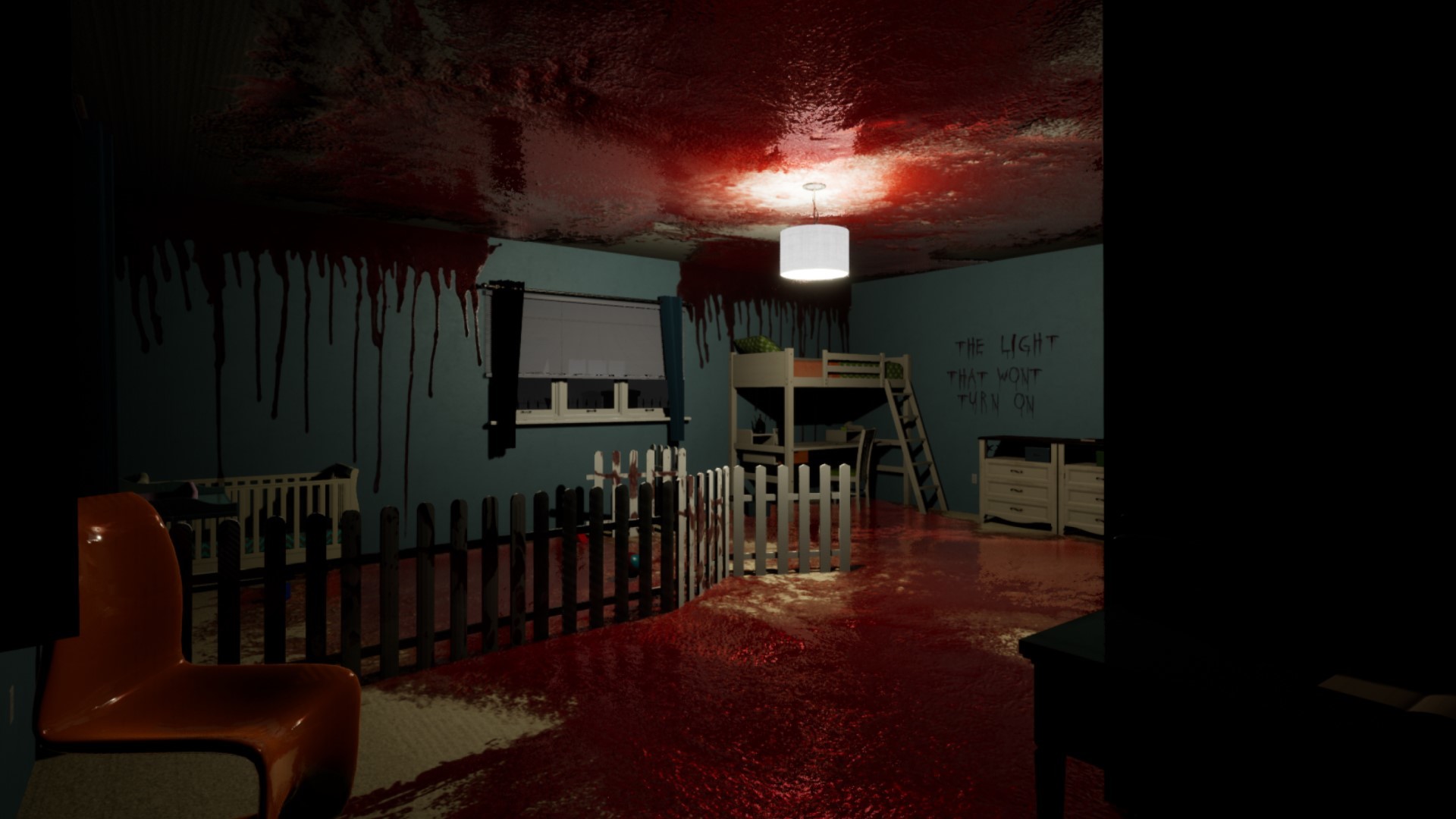

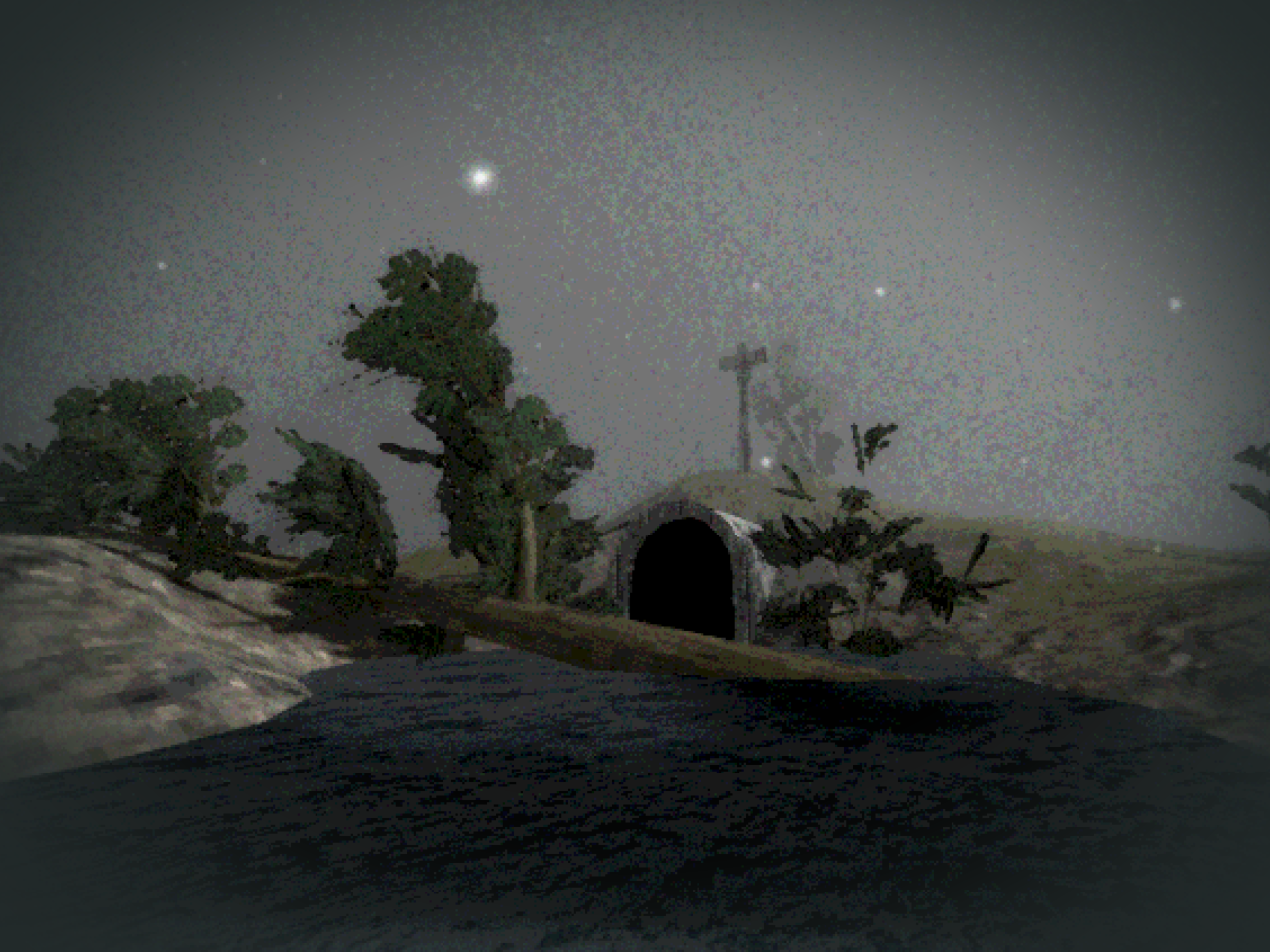
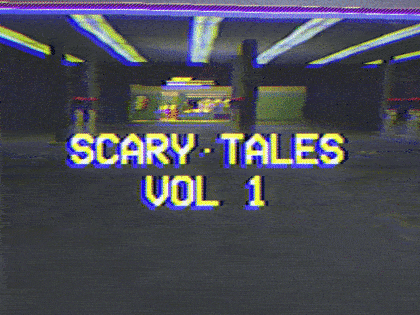
4 Responses
[…] Exploring the beautiful world of indie horror games (why work from smaller devs, and indie devs, is … […]
[…] example, look at the low-poly PS1 horror movement. It’s huge right now. If you start digging into this on itch.io you find all sorts of unsung […]
[…] “atmospheric horror” genre is something that I view very unique to games. It’s grown to be this iconic thing on itch.io. In no other entertainment medium can I imagine the lack of a goal being the purpose, or the lack of […]
[…] Despite the incredible depth of detail AAA games today have, I think the older lack of detail, the hidden things, what remains unsaid… is why horror in games remains such a unique experience. This is why I think the PS1 era style horror boom is so popular right now. I wrote about that here: Exploring the beautiful world of indie horror games (why work from smaller devs, and indie devs, is … […]